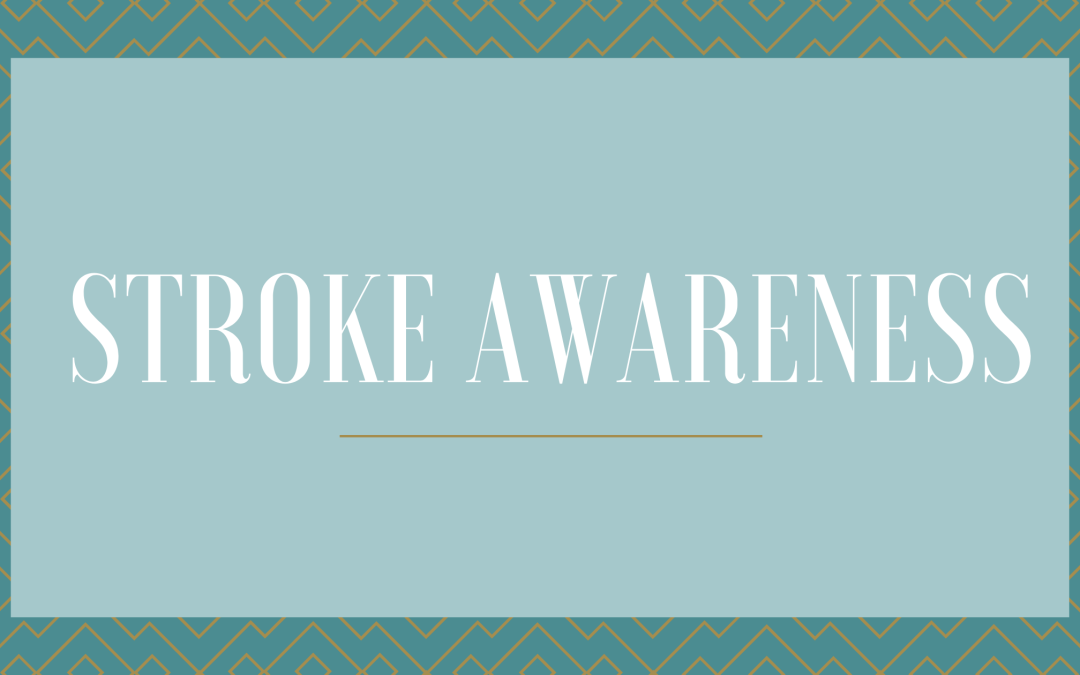The Unreported Killer
It started with a loss for words, a muscle cramp in the right leg, a headache that felt like the brain was exploding. That’s how some victims of stroke describe the onset of symptoms that they ignored at first.
The American Heart Association reports that more than 795,000 people in the United States have a stroke each year. Over 80 percent of them weren’t aware of their risks or ignored their symptoms. Oftentimes people have strokes without any warning or realizing they’re having one – until they can’t speak or move a part of their body.
Stroke Awareness
The two most important things to know when it comes to a stroke are: recognizing the signs and acting fast. Stroke can cause lasting brain damage, long-term disability or even death, so every minute without medical care is life threatening – literally.
According to the stroke medical director at the Walter Reed National Military Medical Center, we lose about 1 million brain cells per minute during a stroke. That’s why he stresses getting to a hospital right away, preferably by ambulance, “because EMT’s can stabilize you on the way to the hospital and once there, they bypass triage and get you immediate medical attention.”
Strokes attack the brain, not the heart. There are two kinds: ischemic strokes, the most common, where a blood clot stops the blood from flowing into the blood vessels of the brain, and hemorrhagic (or bleeding) strokes, where a blood vessel tears or ruptures, causing bleeding into the brain. In both cases, the brain is deprived of oxygen and nutrients.
Warning Signs: Think F.A.S.T.
- F = Face Drooping – Does one side of the face droop or is it numb? Ask the person to smile to see if it’s uneven.
- A = Arm Weakness – Is one arm weak or numb? Ask the person to raise both arms. Does one arm drift downward?
- S = Speech Difficulty – Is speech slurred or mumbled?
- T = Time to call 911
Don’t Ignore These Either:
- Numbness or weakness of face, arm, or leg, especially on one side of the body
- Confusion, loss for words or understanding speech
- Trouble seeing in one or both eyes
- Trouble walking, dizziness, loss of balance or coordination
- Bad headache with no known cause
Risk Factors
While there are risk factors – several of them genetic – that increase our potential for having a stroke, they ARE treatable. Age is the strongest determinant of stroke and the risk of stroke doubles every decade above age 55. And important to note: There has been a surprising number of people under 50 having strokes over the past few years.
However, if you fall into any of the categories below, you should get these conditions or habits under control to lessen your risk of having a stroke.
-Hypertension
-Diabetes
-High cholesterol
-A family history of stroke or heart disease
-A University of Miami study found that depression is linked to a higher risk of stroke.
-Smoking
-If you have atrial fibrillation, you are FIVE times more likely to have a stroke.
-The use of illegal drugs, such as cocaine
-If you are Hispanic, you have a higher chance of stroke. The risk is twice as high for African Americans as it is for whites, according to the Centers for Disease Control – particularly blacks’ adults with high blood pressure and sickle cell anemia.
Preventing a Stroke
Yes, research shows you can reduce your risk for a stroke by 40 percent by increasing your physical activity level. A study published in the Journal of the American Medical Association reported that 2 ½ hours of moderate to vigorous activity a week, including walking your dog – or yourself – vacuuming, sweeping or mopping or playing catch, can reduce the risk of stroke, especially in older adults.
What You Need to Know
-Once you have a stroke, you are at a higher risk of having another one.
-Men and women show the same symptoms of strokes.
-Strokes can go undetected until a patient begins have memory loss or the start of headaches.
-Each year, about 240,000 people experience a TIA — a temporary blockage of blood flow to the brain. While the TIA itself doesn’t cause permanent damage, nearly one out of five people who have a TIA will suffer a full-blown stroke within three months. That’s why if you experience stroke symptoms that disappear in less than an hour, you should still see a doctor.


Recent Comments